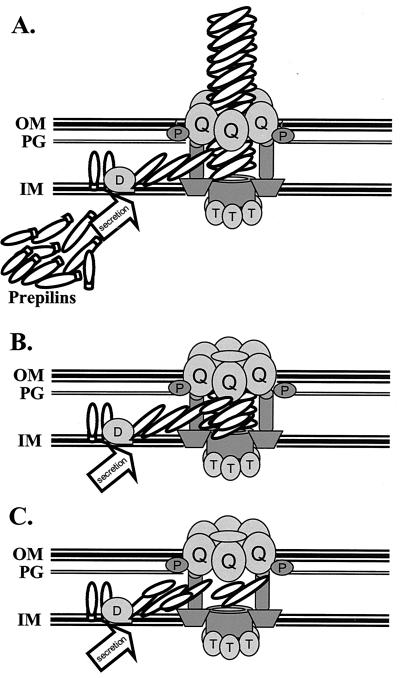FIG. 8.
Models for pilin-dependent DNA transformation competence. (A) Hypothetical model of the pilus assembly apparatus. This cartoon shows production of the pilin and pilin-like subunits in the cytoplasm and processing by the PilD peptidase (D), followed by polymerization at an unknown location and extrusion through the PilQ secretin (Q), which is associated with PilP (P). PilT is shown interacting with unknown proteins in the cytoplasmic membrane, but this has not been demonstrated. The presence of pilin-like proteins in the exposed fiber is speculative. Not all proteins known to be required for pilus assembly or DNA transformation competence are shown. (B) The residual pilus model. When limited pilin is expressed in the regulatable strain grown without IPTG, a small amount of pilin is produced. These pilin subunits are transported into the periplasm, where the PilD peptidase cleaves the signal sequence and the mature pilin interacts with pilin-like proteins and other members of the assembly apparatus to produce a residual pilus. While the residual pilus is drawn as not being exposed on the cell surface, the residual pili would be predicted to be of different lengths with some protruding from the cell surface but too short to be detected frequently by negatively stained electron microscopy. (C) The pilus-independent transport model. In this model the pilus assembly apparatus assumes a transport-competent form which is dependent on pilin but does not require a polymerized pilus to be within the assembly apparatus that transports DNA. In this model, pilus assembly and DNA transport machinery are separate, but each requires the presence of pilin.

